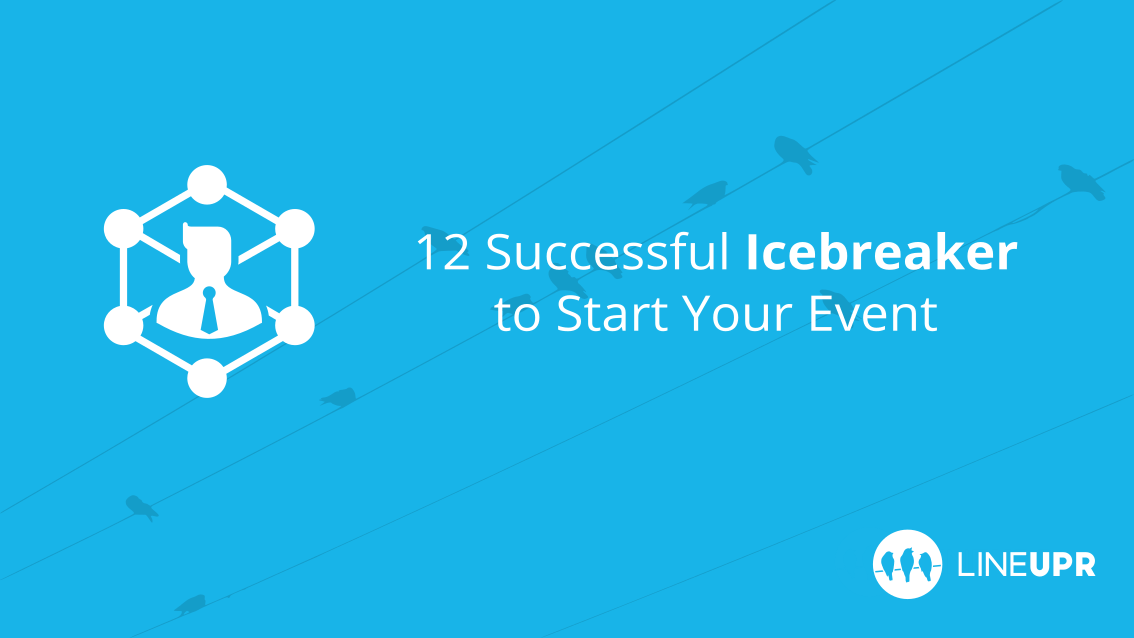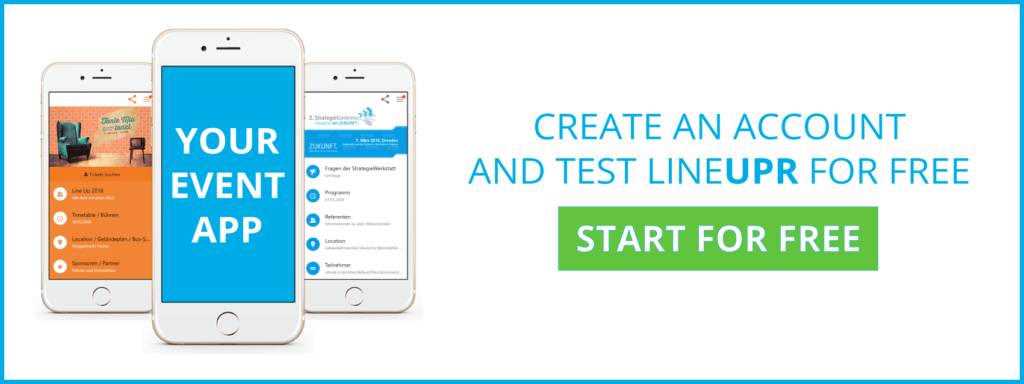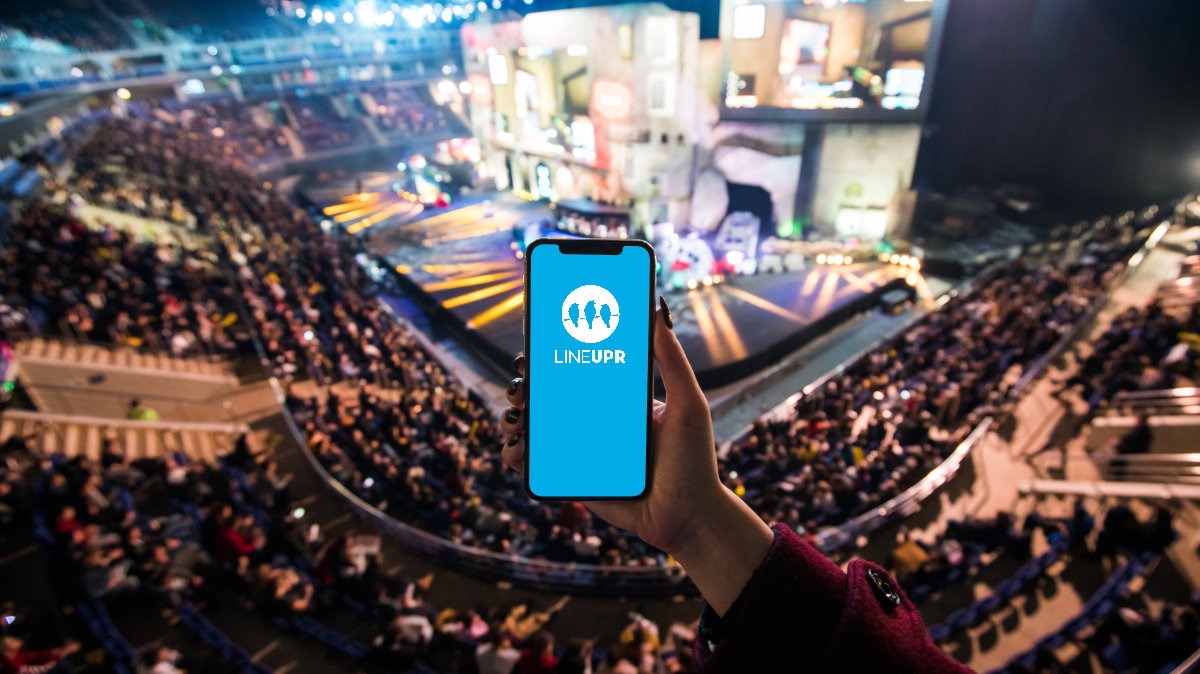Reading time: 6 Minutes
In this article, we’ll show you 12 interactive icebreakers that you can use to optimize networking and interaction on your events. We have already clarified in Part 1 what an icebreaker is and how to define suitable targets for the purpose.
The second part deals today with the deliberate use of interactive tools such as event apps, throw-microphones, and paper.
Interactive Voting with the Audience
This is where your event app comes into play. The moderator asks one or more questions to the audience. These can be general questions about the event, the participants or the theme of the event. Afterward, the participants have 1-2 minutes to answer these questions. The results are then presented live.
This exercise has two advantages. First, it always triggers a small wow effect on the audience when they see the results of a survey live, and secondly, as an organizer, you can quickly gain an overview of the opinion or knowledge of your participants.
Structured Questions to the Speakers
Of course, it goes in the other direction. Instead of the moderator/speaker asking questions to the audience, the audience can also ask questions to the people on stage. There are, in principle, multiple variations.
If you want to have structure, have your participants form small groups, and each of these groups can then ask a question. However, you can also allow all participants to individually and simultaneously ask questions through the app. As an organizer, you are also faced with the question of whether you want to show the participants’ suggestions live or curate them beforehand. Especially in corporate events, there is often the reasonable fear that some participants enter nonsensical suggestions. For this reason, many of our customers use the moderation function and select the questions in advance.
With this game, you give your participants the opportunity to ask their individual questions. They automatically feel better understood and integrated into your event. Besides, not only the very self-confident persons who have already asked their questions loudly can voice their concerns, but also the more quiet ones.
The Question Ball
A game that is more suitable for smaller groups. You need a big and light ball for this, for example, a beach ball. You design the ball around with various questions. Your participants now stand in a circle and throw this ball to each other. If a person catches the ball, then they must answer the question that is closest to their right index finger. The credits for this idea go to Jonny Heather von Artifax.
Depending on what you want to achieve with this game, you should also select the questions. If you are primarily interested in getting to know the participants, you should ask personal questions such as “Where are you from?” “What is your favorite sport?” or “Which book did you last read?”. You can also focus on the event and pick the appropriate questions. At the same time, you can also gain a better impression of your participants.
https://www.youtube.com/watch?v=3Q-QbVh1riI
X Facts in a Hat
This game is strongly reminiscent of the game two truths and a lie. In the beginning, the participants gather in smaller groups of up to 5-10 people. Each participant writes one of his strengths on a small piece of paper and then throws it into a container. After shaking, each participant now takes a piece of paper out of the container, reads out the strength aloud, and gives an example of why he/she has this strength.
This game is straightforward and automatically creates a positive feeling among your participants. Also, one learns something directly from the other participants and can refer to it during the discussions in the break. Networking becomes even easier.
Table Games and Quizzes
Especially at many smaller events participants are often placed at several tables. As an organizer, of course, you want the table neighbors to get into conversation quickly and that no awkward silence is created. You can accelerate this process by placing small games on the tables. We all know this from the sandbox. When playing together, getting to know each other is much more comfortable.
You can also make a contest where the different tables compete against each other, for example, a little quiz duel. In both cases, the table neighbors will quickly get into a conversation.
Throw-Microphones – Questions to the Speakers
Of course, instead of using an app, you can also use another medium to collect visitor queries. Throw-microphones have become very popular in recent years. These microphones are usually integrated in a cube or ball of foam. As a result, you can throw them over several meters, without dangers for the participants. In addition, there is also a small playful effect and a lot of excitement from the game. The most famous provider is undoubtedly Catchbox.
https://www.youtube.com/watch?v=apjN3xThfY8
Card Deck as Matchmaker
Matchmaking is currently one of the most exciting topics at business events. If the networking is lame, then simply link two people together by hand. That’s the point of matchmaking. This automatically resolves the difficult part of initiating contact. There are now many apps and software solutions which deal with it, but there is also a simple analog version: A deck of cards!
When registering on-site, all participants must draw a card from a standard deck of cards. People with cards of the same color, number/image or category must now find each other and talk to each other. This idea from EventManagerBlog is super easy to implement.
Depending on how big your discussion group should be, you can choose the card deck and the selection criterion.
The Toilet Paper Challenge
If you want participants to share personal information with each other, this is a simple and quick game to play. In the beginning, groups of up to 10 people are formed. Then toilet paper rolls are passed around and each participant is allowed to take as many sheets as he wishes. Afterward, every person in the group has to list just as many personal facts about himself as toilet paper sheets that he has.
Since it is not yet known what will happen afterward when choosing the number of sheets, there is always a positive tension to be felt. When the explanation is given there is always a loud reaction. So it stays in the memories of the participants.
Individual Name Tags
As already described several times, the main problem with networking is the fear of the initial contact. Most participants do not know what to ask here. You can make it easier for your participants to start this first conversation when you prepare conversation tags, such as individual name tags. Here you could publish three facts about each participant. Or the participants have to answer three questions at the registration and the answers will be published on the business card. No matter how you offer a perfect reason to address the person.
Human Bingo
A bit more elaborate, but still very funny. You’ll need to create several different bingo cards with character traits or information about people in advance, for example: Comes from Berlin, is under 25, plays football… Each participant will receive such a bingo card and must find the appropriate persons with the appropriate criteria among the other participants. So if he talks to someone who plays football, then he can check this box. The participant, who is the first to fill a row, shouts BINGO!
This is an enjoyable game and your participants can get to know each other in a fun way. Thanks to the idea of competition, there will also be a lot of movement.
Fairy Tale Introductions
What is it like to be presented as a fairy-tale hero? This experience can be made possible with this game for your participants. Again, small groups of up to 10 people are formed. Each participant may now introduce his left and right neighbors in about 30 seconds. The unique thing is that, except for the name, all statements must be made up. The participants should also use flowery words. There are no limits to their creativity.
This ice-breaker was taken from David Becker von ZKIPSTER. It is guaranteed to lead to a lot of laughter and creative suggestions. This connects the participants with each other.
Paper Fight
If you want to increase the activity of your participants with your game rather than the networking, then the paper ball fight is perfect. Each participant receives a piece of paper and should write down a wish, a goal, a question, etc. Subsequently, the sheet is formed into a ball and thrown on the stage at the moderator’s signal.
How this can be done can be seen in this video by Eric de Groot at 3:00 mins
https://www.youtube.com/watch?time_continue=2&v=_kI-V4FCdx4
Of course, instead of paper balls, this can also be done with paper planes. Optionally, participants can then pick up the paper objects and read aloud. That depends on the size of the event.
Anyway, that will stay in their minds and increase the energy level.
What You Should Have Learned
Today we presented 12 interactive ideas with the help of event apps, throw-microphones, and paper to increase networking among your participants. This reduces their fear of contact and allows for optimal networking at your event.
“Network” Icon created by Chameleon Design from “the Noun Project“.




